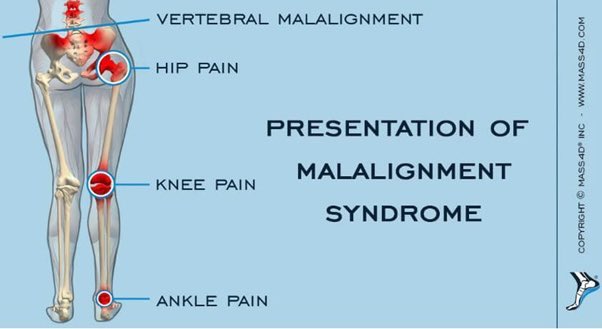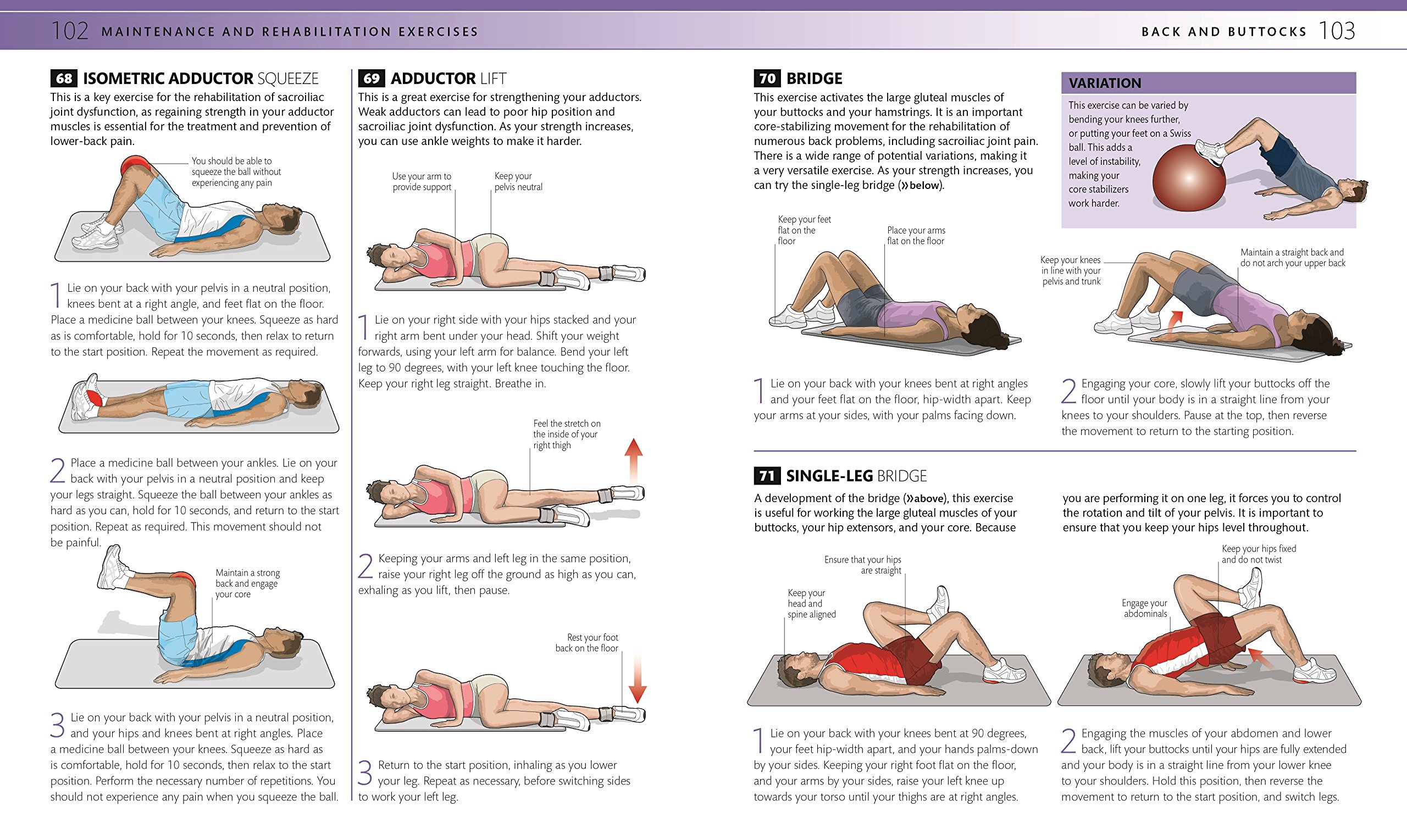Hip pain down to ankle. Hip Pain Radiating Down Leg: Causes, Symptoms, and Treatment Options
What causes hip pain that radiates down the leg. How to identify different types of radiating hip pain. When should you see a doctor for hip and leg pain. What are the most effective treatments for radiating hip pain.
Understanding Hip Pain: Anatomy and Common Causes
The hip joint is one of the largest and most complex joints in the human body. Its ball-and-socket structure allows for a wide range of motion while also providing stability and supporting body weight. Hip pain can originate from various structures within and around the joint, including bones, cartilage, muscles, tendons, and nerves.
Common causes of hip pain include:
- Osteoarthritis
- Rheumatoid arthritis
- Labral tears
- Bursitis
- Tendinitis
- Muscle strains
- Fractures
- Nerve compression
When hip pain radiates down the leg, it often indicates that nerves are involved. This can be due to direct compression of nerves in the hip region or referred pain from other areas like the lower back.

Types of Radiating Hip Pain and Their Characteristics
The location and nature of radiating hip pain can provide valuable clues about its underlying cause. Let’s explore the three main types of radiating hip pain:
1. Anterior Hip Pain
Pain originating in the front of the hip may radiate down the front of the thigh and sometimes to the knee. This type of pain is often associated with:
- Hip osteoarthritis
- Labral tears
- Femoral acetabular impingement (FAI)
Activities like squatting, sitting for prolonged periods, or rotating the hip can exacerbate anterior hip pain.
2. Lateral Hip Pain
Pain on the side of the hip that radiates down the outer thigh is often related to greater trochanteric pain syndrome (GTPS). This can be caused by:
- Trochanteric bursitis
- Gluteal tendinopathy
- Iliotibial band syndrome
GTPS can be triggered by overuse, obesity, or underlying conditions like arthritis.
3. Posterior Hip Pain
Pain that starts in the back of the hip and radiates down the back or side of the leg is often associated with sciatic nerve irritation. This can be caused by:

- Herniated discs
- Spinal stenosis
- Piriformis syndrome
Sciatic pain is typically described as sharp, shooting, or burning and may be accompanied by numbness or tingling.
Diagnosing the Source of Radiating Hip Pain
Accurately diagnosing the cause of radiating hip pain requires a comprehensive approach. Healthcare providers typically use a combination of methods:
- Physical examination
- Patient history
- Imaging studies (X-rays, MRI, CT scans)
- Nerve conduction studies
- Diagnostic injections
During the diagnostic process, it’s crucial to differentiate between true hip pathology and referred pain from the lower back or other sources.
Is my radiating hip pain serious?
While many cases of radiating hip pain are not immediately serious, certain symptoms warrant prompt medical attention:
- Severe pain or swelling
- Inability to bear weight on the affected leg
- Fever or signs of infection
- Sudden onset of weakness or numbness
- Pain following a traumatic injury
If you experience any of these symptoms, it’s important to seek medical care as soon as possible.

Treatment Options for Radiating Hip Pain
The treatment of radiating hip pain depends on its underlying cause. Here are some common approaches:
Conservative Treatments
- Rest and activity modification
- Physical therapy and exercises
- Ice or heat therapy
- Over-the-counter pain medications
- Weight management
Medical Interventions
- Prescription pain medications or muscle relaxants
- Corticosteroid injections
- Platelet-rich plasma (PRP) therapy
- Nerve blocks
Surgical Options
In severe cases or when conservative treatments fail, surgery may be considered. Surgical options depend on the specific condition but may include:
- Hip arthroscopy
- Hip replacement
- Spinal decompression surgery
Preventing Radiating Hip Pain: Lifestyle and Exercise Tips
While not all causes of radiating hip pain can be prevented, there are steps you can take to reduce your risk:
- Maintain a healthy weight
- Engage in regular low-impact exercise
- Practice proper posture and ergonomics
- Warm up before physical activities
- Strengthen core and hip muscles
- Avoid prolonged periods of sitting
Incorporating these habits into your daily routine can help maintain hip health and potentially prevent the onset or worsening of radiating hip pain.

When to Consult a Specialist for Radiating Hip Pain
While mild hip pain may resolve on its own, persistent or severe pain that radiates down the leg often requires professional evaluation. Consider consulting a specialist if:
- Pain persists for more than a few weeks
- Conservative treatments don’t provide relief
- Pain interferes with daily activities or sleep
- You experience progressive weakness or numbness
Depending on the suspected cause, you may be referred to an orthopedic surgeon, neurologist, or pain management specialist.
What questions should I ask my doctor about radiating hip pain?
To make the most of your medical consultation, consider asking the following questions:
- What is the likely cause of my radiating hip pain?
- Are there any additional tests I should undergo?
- What treatment options do you recommend?
- What are the potential side effects or risks of these treatments?
- How long should I expect recovery to take?
- Are there any activities I should avoid?
- What can I do to prevent this pain from recurring?
Alternative and Complementary Therapies for Radiating Hip Pain
In addition to conventional medical treatments, some individuals find relief from radiating hip pain through alternative and complementary therapies. These may include:
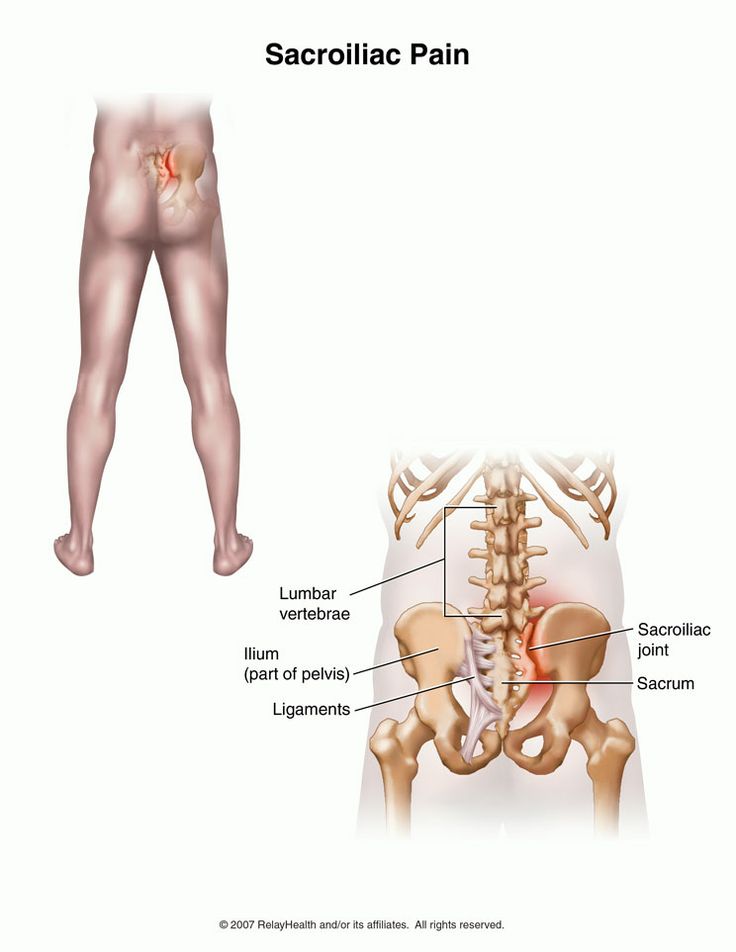
- Acupuncture
- Chiropractic care
- Massage therapy
- Yoga or tai chi
- Herbal supplements
It’s important to note that while some people report benefits from these approaches, scientific evidence supporting their effectiveness varies. Always consult with your healthcare provider before starting any new treatment regimen.
Can dietary changes help manage radiating hip pain?
While diet alone may not cure radiating hip pain, certain nutritional strategies can support overall joint health and potentially reduce inflammation:
- Increase intake of omega-3 fatty acids (found in fish, flaxseeds, and walnuts)
- Consume antioxidant-rich foods (like berries, leafy greens, and colorful vegetables)
- Include anti-inflammatory spices like turmeric and ginger in your diet
- Stay hydrated to support joint lubrication
- Limit processed foods and added sugars, which may contribute to inflammation
Remember, dietary changes should complement, not replace, medical treatment for radiating hip pain.
Living with Chronic Radiating Hip Pain: Coping Strategies and Support
For some individuals, radiating hip pain may become a chronic condition. Developing effective coping strategies is crucial for maintaining quality of life. Consider the following approaches:

- Pain management techniques (e.g., mindfulness, relaxation exercises)
- Assistive devices (canes, walkers, or hip braces) for mobility support
- Ergonomic modifications at home and work
- Joining support groups or online communities
- Seeking psychological support to address the emotional impact of chronic pain
Remember that everyone’s experience with chronic pain is unique, and it may take time to find the right combination of strategies that work for you.
How can I improve sleep quality with radiating hip pain?
Radiating hip pain can significantly impact sleep quality. Try these tips to improve your sleep:
- Use supportive pillows to maintain proper alignment
- Invest in a mattress that provides adequate support
- Try different sleeping positions to find the most comfortable one
- Practice good sleep hygiene (consistent sleep schedule, relaxing bedtime routine)
- Consider using heat therapy before bed to relax muscles
- Consult your doctor about pain medication timing to optimize nighttime relief
Improving sleep quality can help manage pain levels and enhance overall well-being.
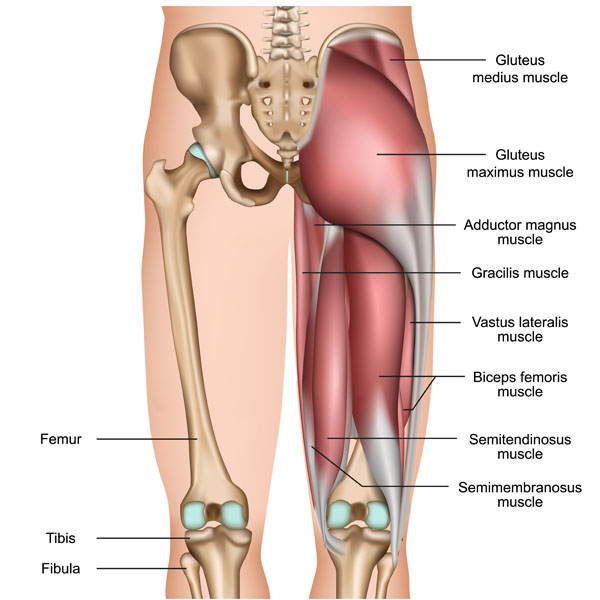
What Does Hip Pain That Radiates Down the Leg Mean?
Skip to content
The hip joint is one of the largest joints in the body – and it can be a source of discomfort and pain. Its complex ball and socket construction allows for motion, provides stability, and enables the body to bear weight. The hip is essential for many activities including standing, walking, running, jumping, and sitting.
Hip pain involves any discomfort felt in or around the hip joint. Hip pain is common in adults and may occur in the front, side, and back of the hip. The location of pain helps to provide insight into its cause.
Front of the Hip
Pain that originates in the front of the hip can be caused by conditions that affect the hip joint such as:
- Osteoarthritis from wear and tear
- Labral tear is an injury to the soft tissue that covers the socket of the hip
These conditions can result in instability, or an abnormal hip joint movement called hip impingement. Hip impingement pain may radiate from the front and side of the hip to the front of the thigh and knee. Activities such as squatting, sitting, or rotating the hip can worsen the pain.
Hip impingement pain may radiate from the front and side of the hip to the front of the thigh and knee. Activities such as squatting, sitting, or rotating the hip can worsen the pain.
Side of the Hip
Pain that originates from the side of the hip and radiates down to the thigh may result from a spectrum of hip disorders called the greater trochanter pain syndrome (GTPS).
The greater trochanter is located at the top of the thighbone, or femur, and makes up the widest part of the hip. The cause of pain in this area is often due to an injury to the soft tissues that lie over the upper part of the thigh bone.
Other causes of GTPS include:
- Overuse or stress on the hip
- Being overweight
- Arthritis
- Bursitis
- Inactivity which leads to reduced muscle strength and flexibility
Back of the Hip
Pain that radiates from the back of the hip down to the side of the leg may be caused by irritation of the lower back nerve roots.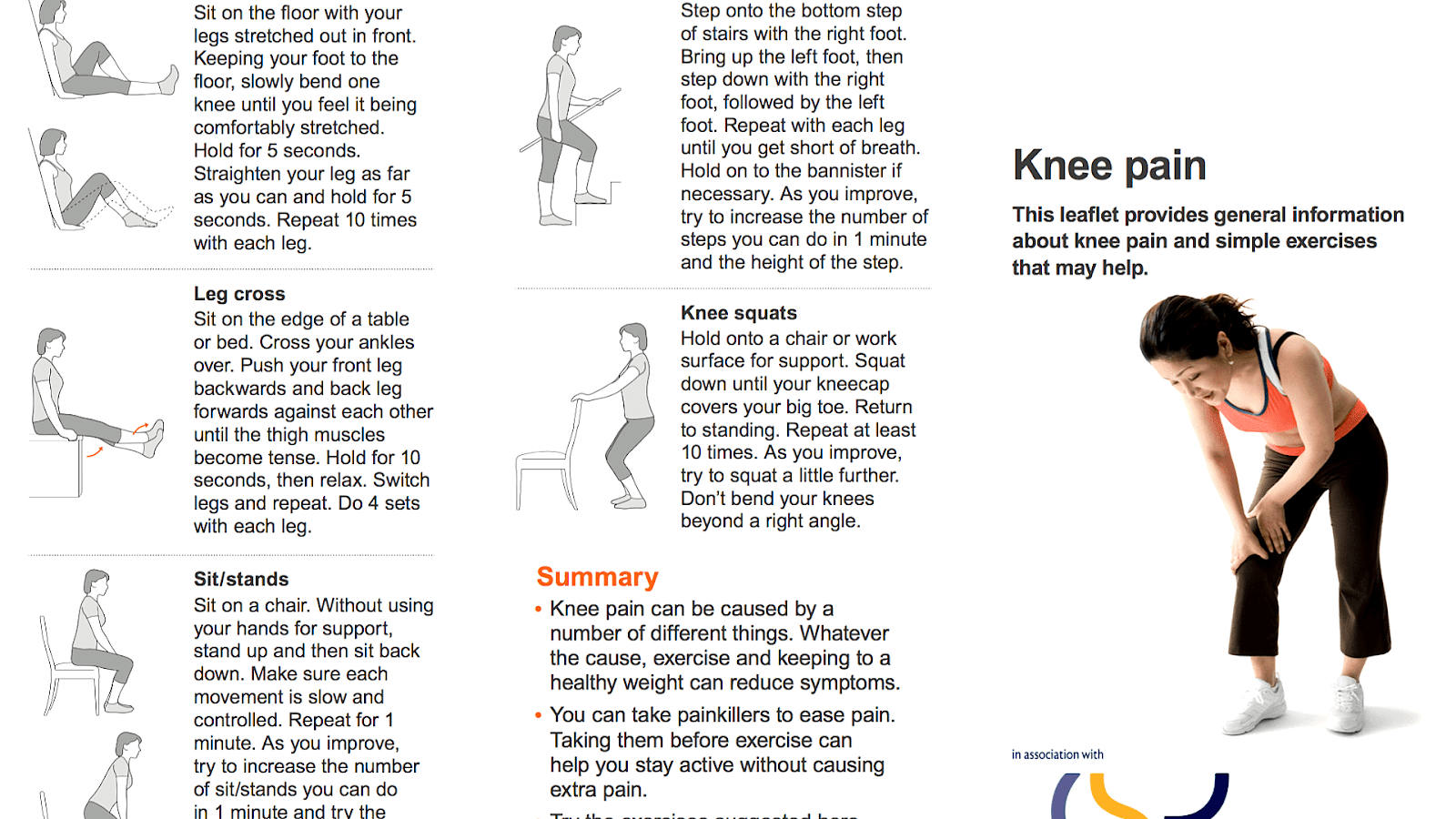 This condition is known as sciatica.
This condition is known as sciatica.
The sciatic nerve branches from the lower back, through the hips and buttocks, and down each leg. Typically, sciatica only affects one side of the body but in certain conditions can affect both.
Sciatic nerve pain begins in the back and can radiate towards the hip and down the leg. It is often associated with numbness, tingling, and weakness. The pain can be described as sharp, shooting, or jolts of pain.
Sciatica can be caused by several different conditions including:
- A herniated or slipped disk
- An abnormal narrowing of the spinal canal or spinal stenosis
- Osteoarthritis or bone spurs caused by aging spines
- Injury to the lower back
- Piriformis syndrome: a condition in which muscle deep in the buttock tightens, or spasms causing numbness and tingling along the back of the leg and into the foot
If you are suffering from radiating pain your doctor can help you figure out the real cause and determine the best treatment options for you.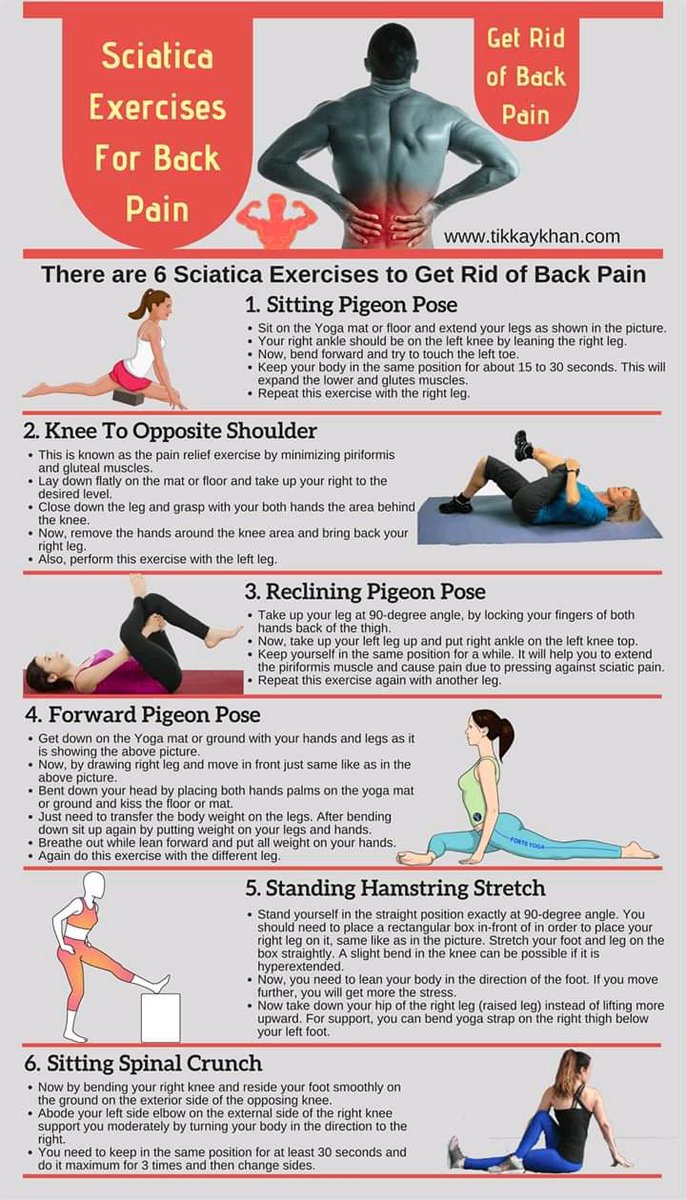
Don’t suffer from radiating hip pain any longer – schedule an appointment today!
Support32022-08-01T09:48:12-05:00
Page load link
Go to Top
I Have Pain That Shoots Down My Hip And Leg. Help!
Modern daily life can put strain on our hip joints and our legs. And the more overweight you are, the higher the risk of joint pain.
Weight loss is often the best course of action in dealing with joint pain, and with almost 70% of Northern Americans being overweight, it’s common to leave the explanation at that.
Yet, it’s not only joint problems that cause issues in the hips and legs.
Hip pain can often radiate down the leg and masquerade as a source of discomfort in your knee or lower leg and, with doctors and specialists pushing the concept of joint stiffness and problems, it’s easy to generalize and cast your own diagnosis.
While joint stiffness shares a common denominator with any hip/leg issue, in that it makes daily activities harder to perform, there are often other factors at play.
Hip pain can stem from anywhere in the area, with this pain fed down the nerves that travel down into the lower leg. This can cause affliction in the thigh, the knee, and down towards your feet.
So what’s the potential diagnosis? Here are some of the most common causes of pain that radiate from the hip and down your leg.
Hip Osteoarthritis
Sounds like something big and scary, but osteoarthritis is the common wear-and-tear of the hip joint. This condition commonly causes a sensation of deep aching in the groin and hip area, but can spread through areas below your knee.
This kind of pain is often worse after a night’s sleep, or a prolonged period of resting, sitting, or physical movement. At the risk of causing the squeamish among us to wince, osteoarthritis can cause a grinding sound and a locking/sticking sensation to occur.
Labral Tear Of The Hip
The labrum is a cup-shaped rim of cartilage that lines the ball-and-socket joint, and reinforces the shape of your hip (just as the same ‘design’ does for your shoulder).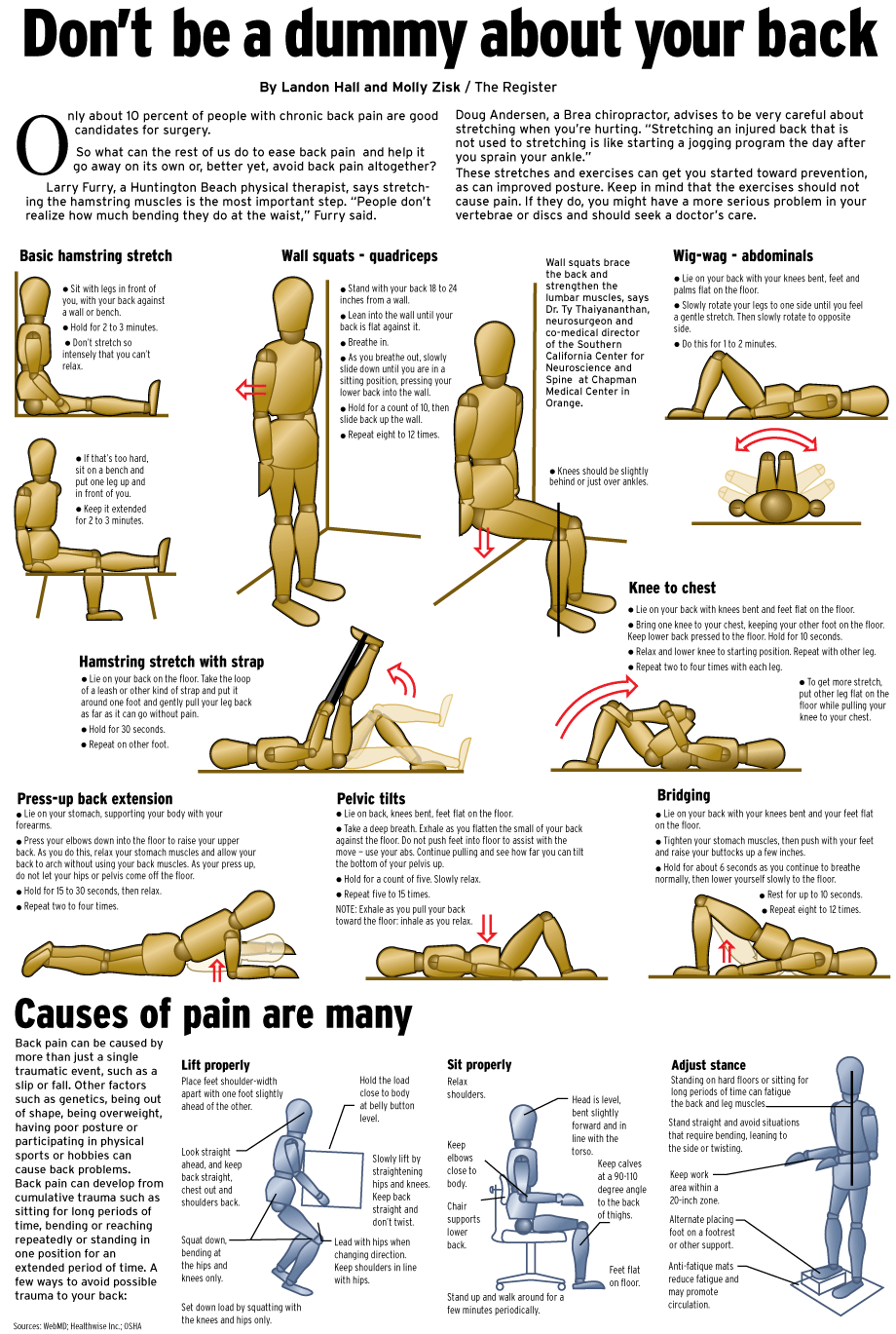 When this cartilaginous ring around the acetabulum (hip socket) tears or becomes damaged, then variable symptoms are practically inevitable.
When this cartilaginous ring around the acetabulum (hip socket) tears or becomes damaged, then variable symptoms are practically inevitable.
Pain in the groin area is common, but can also creep across the hip and down each buttock. The discomfort that stems from a labral tear is felt at its worst after exercise or any other vigorous activities. As time’s onward march continues, and without treatment, this pain will become more prevalent throughout less strenuous movements, such as resting or sleeping.
Hip Impingement
The fancy latin name that your MD may use for this condition is (deep breath) Femoroacetabular Impingement. Sounds complex, right?
Hip impingement refers to intermittent pain and a dull ache around the hip and groin, and sharp pain after any form of movement – such as putting on shoes, getting out of a chair, or pivoting while getting dressed.
An impingement can occur after abnormal contiguity between the hip bone and its joints, often stemming from results caused by labral tears or hip osteoarthritis. The subsequent pain can shoot down from the hip to the front of your thigh, and also your knee.
The subsequent pain can shoot down from the hip to the front of your thigh, and also your knee.
Once the condition reaches a certain stage, without the proper treatment, the discomfort is inflamed by driving and sitting.
Iliopsoas Bursitis
Another scary sounding condition, but it’s nothing that can’t be fixed! The iliopsoas bursa sounds like a distant solar system, but the term refers to a small fluid-filled sac that sits in the front of your hip. If this sac becomes inflamed, it can cause serious pain in the groin and when moving your knee.
It’s not just the front of your hip where these sacs reside, with one also located on the side of the hip joint. As you could imagine, this pain radiates with ferocious consequences upon applying any form of pressure on the hip, and will channel that pain down the side of your thigh.
Look away if you are squeamish, but one domino-effect from this condition is Snapping Hip Syndrome, where clicking and snapping takes place upon moving the hip and joints. Not only can this snap be felt, but it can also be heard. And while on that subject…
Not only can this snap be felt, but it can also be heard. And while on that subject…
External Snapping Hip
Certain causes of hip/leg pain can start from the side of the hip and work its way down through the thigh. One such cause is External Snapping Hip. Basically, this is caused when a tendon or segment of muscles slides across the Great Trochanter (the bone that protrudes from the side) that rests on the femur (your thigh bone).
This causes that alarming noise, and besides the associated pain, applies direct pressure over the Great Trochanter and creates painful sensations down the side of your legs.
Sciatica
This one is often the most common cause of hip pain being funneled down your leg. Sciatica refers to the sciatic nerve that runs between your hip and down each leg. To be exact, it runs down the back or your hip and the front, back, and sides of your leg.
Sciatica pain may be accompanied by tingling or numbness, or even muscle weakness. Sciatica is often associated with an underlying medical condition, such as a herniation of the lumbar disk and the pain may be intermittent or constant, mild or severe. Either way, you should seek assistance from your physical therapist regardless of your pain threshold.
Sciatica is often associated with an underlying medical condition, such as a herniation of the lumbar disk and the pain may be intermittent or constant, mild or severe. Either way, you should seek assistance from your physical therapist regardless of your pain threshold.
How Physical Therapy Can Help
Ok. Let’s get one thing straight. Chronic hip pain that comes on suddenly (or simply will not go away) and won’t respond to self care must be evaluated by a healthcare professional. Go and see your doctor. If the pain becomes unbearable and you feel in danger, get yourself to the emergency room.
Hip pain can cause other symptoms, too. These include numbness, a lack of feeling in your leg, loss of balance, swelling , nausea, and feverish temperatures. If you have any of these, seek immediate medical assistance. Especially if you have any form of underlying health conditions.
So, how can physical therapy help in all this? An experienced physical therapist will utilize their knowledge to reduce inflammation and pain, and improve your range of motion and physical function.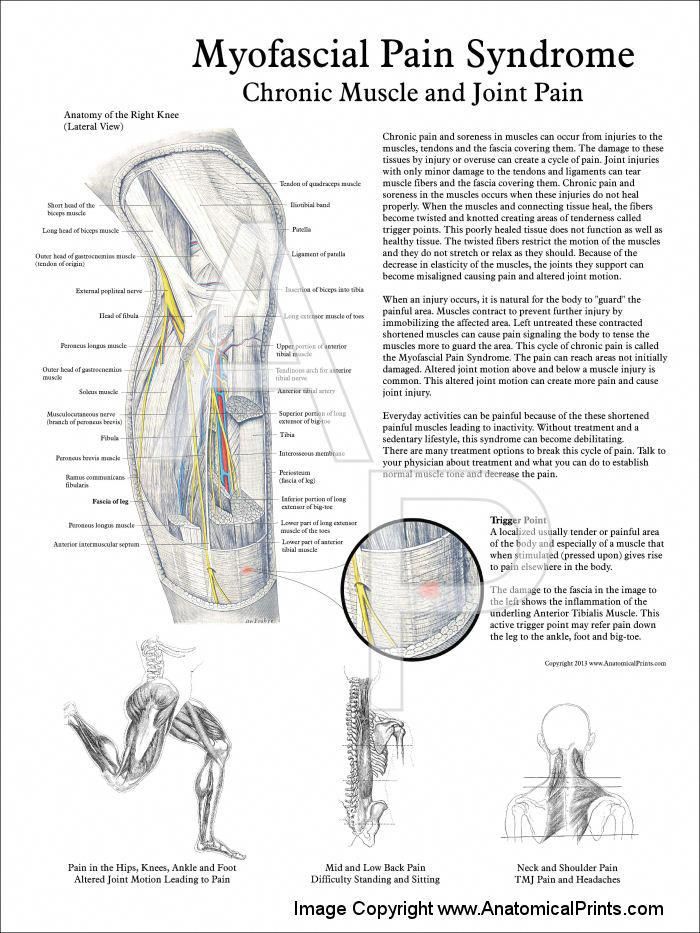
By following a physical therapy program, you’ll also be able to prevent a recurrence of any sciatica symptoms. Not to mention strengthening your pelvic muscles and keeping everything in place to prevent the conditions mentioned above.
While it’s impossible to restrict the effects of aging, with wear-and-tear of the hip joint being one such factor, physical therapy can keep pain at bay. Rather than becoming dependant on painkillers, which only mask the pain and don’t really solve anything.
A physical therapy plan also helps to improve your posture and core strength, which helps to prevent pain and keep your body in tip-top condition. Then there’s the ability to relieve nerve compression, improve flexibility, and normalize your body mechanics. It all sends signals to the brain that help manage chronic pain, too.
Stretching is all very important in this. And there are some stretches that you can do at home, to help relieve some pain symptoms.
Hip Stretch
If your activities require extensive sitting then stretching the muscles in the back of the hip is an exercise that may help with your symptoms. You can easily perform this stretch in a comfortable seated position.
You can easily perform this stretch in a comfortable seated position.
Sit with your back straight and your legs extended out in front of you. Bring your right ankle up and rest it on your left knee, your right knee is bent and will look like the number four.
Taken both hands and grab behind the right knee and gently pull this toward your chest. You should feel tightness deep in the right buttock. When you feel this tightness, hold the position for 30 seconds and then extend the leg back to the floor. Repeat this stretch three times each leg.
Hamstring Stretch
Stretching the hamstring muscles may release the tension caused by the irritation of the sciatic nerve. One simple hamstring stretch may be performed by standing up straight, elevating one foot in front of you and resting it on an object (such as a step) high enough to cause a slight tightness in the back of your leg.
It is important not to raise your foot higher than your hip or high enough to cause a sharp pain in the leg.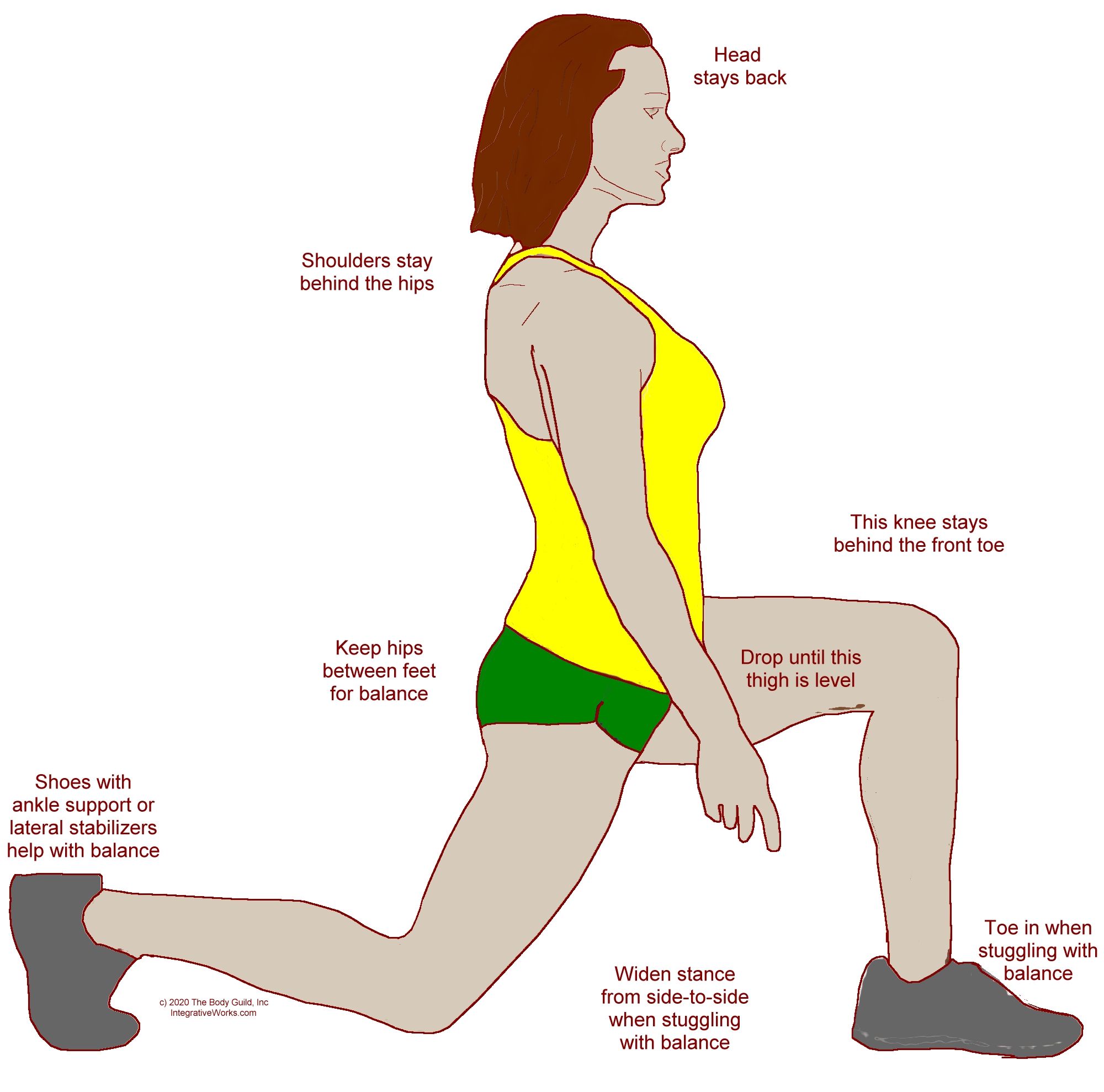 The top of your foot and knee should face toward the ceiling, and not turned outward.
The top of your foot and knee should face toward the ceiling, and not turned outward.
Once your leg is in this position, put your hands on top of your thigh and gently put downward pressure to maintain nice stretch in your hamstring. Caution: be very careful not to overstretch, because that could aggravate the sciatic nerve. Hold this stretch for 30 seconds and then lower the leg back to the floor. You should repeat this exercise three times each leg.
These two stretches can help you release tension and relieve sciatica pain in your buttocks, hips and legs. For best results, practice these exercises regularly for sciatica pain relief.
Do you need more help with your low back pain?
Contact us for a FREE Discovery Visit (Click Here to Schedule) to learn how we can help!
———————————————————————
This is an expanded and updated version of an article from Intecore dating April 12, 2017. You can find the original article here.
- Author
- Recent Posts
Andrew Vertson
Andrew received his Bachelor’s Degree in Exercise Science from California State University, Fresno in 1991. He then earned his Master’s degree of Physical Therapy in 1996 and his Doctorate degree of Physical Therapy in 2002 from Loma Linda University. In 1996 he also earned his Certification as an Athletic Trainer. He has also completed extensive post-graduate course work in orthopedic manual therapy through Kaiser-West Los Angeles and the Ola Grimsby Institute.
He then earned his Master’s degree of Physical Therapy in 1996 and his Doctorate degree of Physical Therapy in 2002 from Loma Linda University. In 1996 he also earned his Certification as an Athletic Trainer. He has also completed extensive post-graduate course work in orthopedic manual therapy through Kaiser-West Los Angeles and the Ola Grimsby Institute.
Latest posts by Andrew Vertson (see all)
Manifestation of pain in the leg during prolonged sitting
No wonder they say that life is in motion. Surprisingly, it is a fact that when sitting, the load on the spine is much greater than when standing for a long time. In a sitting position with a slight forward inclination, the endings of the vertebrae shift, thereby causing pinching of the fibrocartilaginous formations of the spine. Cartilage is naturally very elastic and resists excessive compression, however, the compression force in the sitting position increases 10 times. This type of posture is considered the most harmful to the human back.
- Osteochondrosis. The pain in the disease has a aching character, aggravated by physical exertion. Often painful sensations arise when sitting, giving a leg in
, with a sharp rise. A specialist in the field of neurology is competent to diagnose this kind of ailment. According to the results of tomography and radiography, the diagnosis is confirmed or not. As a treatment, most often, massage procedures, anti-inflammatory drugs, and physiotherapy are prescribed.
- Intervertebral hernia. Severe bouts of pain in the buttocks are a consequence of an intervertebral hernia. Symptoms initially begin in the lower back, gradually spreading to the legs. Hernias are a specialty of orthopedists and neurologists. Depending on the severity of the disease, conservative treatment, surgical intervention is prescribed.
- Strong cramps localized in the lumbar region, radiating to the leg, arm – signal a deformity of the spine. In the absence of proper treatment, aches and continuous pains cover the entire region of the sacrum, aggravated by sitting.

- Sciatica is a protective and adaptive reaction of the body in response to damage to the gluteal nerve. The accumulation of nerve fibers from the spine descends towards the lower extremities, therefore, the sitting position is accompanied by compression of the upper sections of the gluteal nerve. This process is characterized by acute pain in the legs when sitting.
- Coccygeal pain consists of acute symptoms felt in the lower spinal region, the region of the coccyx. Pain is significantly intensified in a sitting position, and often cover the lower part of the abdominal cavity, thighs, perineum.
- Acute back pain occurs in 90% of human society. Of these, 15% of middle-aged people complain of cyclic pain in the spinal region with a duration of no more than 3 days. Experts have recorded that when sitting comfortably, as well as when changing body position from horizontal to vertical, pain becomes 4 times more acute.
The insidiousness of pain lies in the fact that people gradually get used to the discomfort, ignoring the symptoms, the problems they talk about.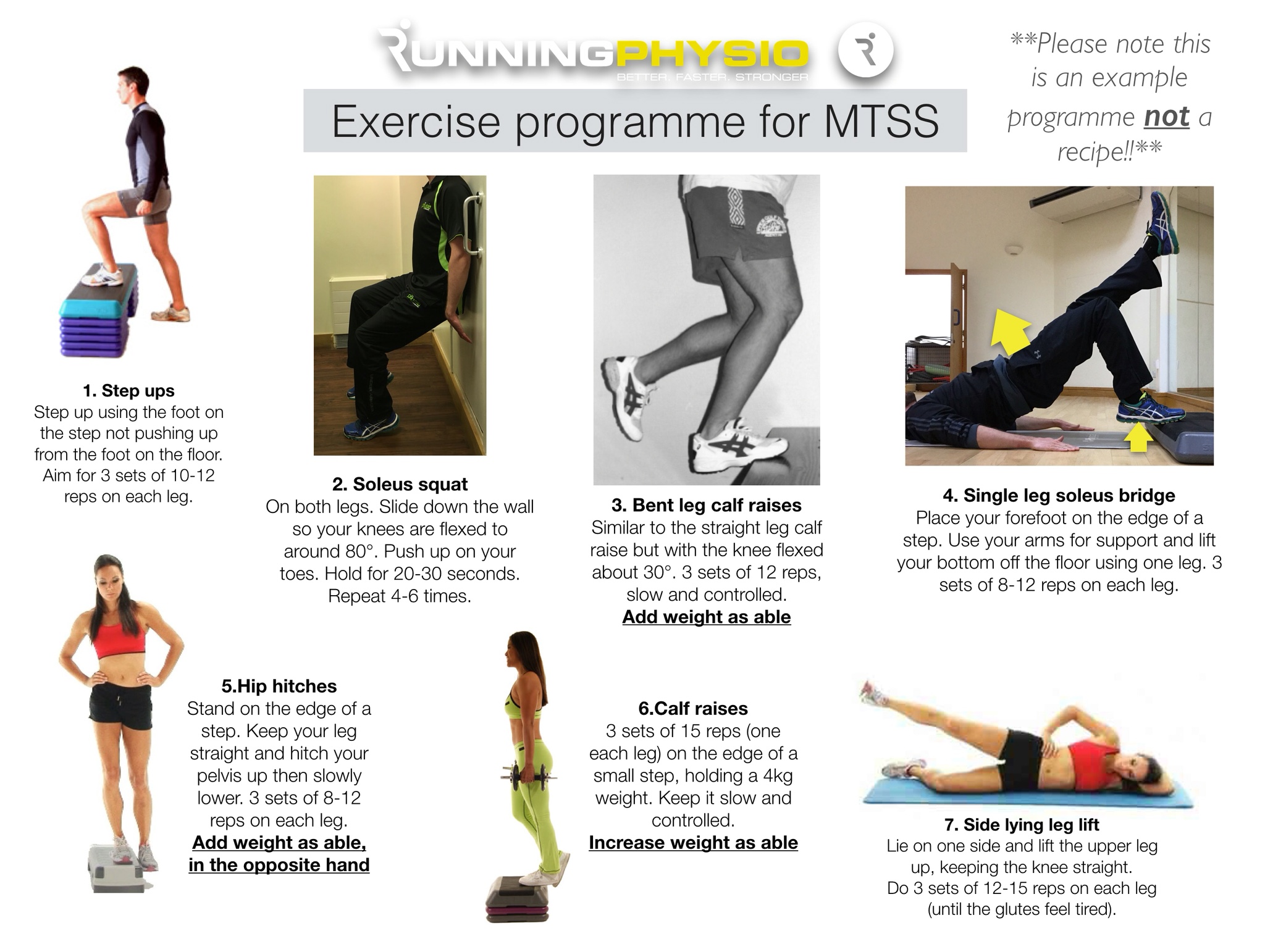 Unfortunately, without adequate treatment, the causes that caused the deviation will go into a progressive stage.
Unfortunately, without adequate treatment, the causes that caused the deviation will go into a progressive stage.
Back Health Center “Kiparis” recommends back treatment according to the author’s method “Self-defense of the organism” on a special device of complex action. We guarantee our patients a long-term result without pain and surgical instruments, thanks to which you will understand that there is no need to endure pain.
Pain in legs while snowboarding
N
It is not unusual for you to experience pain in your legs while snowboarding. There are many reasons for this pain, as well as many solutions to this problem. Today we will look at the most common causes and talk about how to fix them.
Pain in the legs while learning to snowboard
This problem is quite common. Most people who are just starting to learn to snowboard complain that their legs hurt. This usually happens in the first days of skiing, and the main reason is tension! When people make their first descents, they are usually very tense, and this tension tends to show up in the legs.
Already after a few descents, when the student begins to feel more confident, the tension goes away, and with it the pain goes away. Sure, the pain can come back, and it often happens in the first few weeks of snowboarding, when you’re learning new steep descents, or when you get a little nervous while snowboarding.
Too many clothes, in boots
The only thing that should be inside the boot is your foot! Definitely worth investing in a quality pair of snowboard socks. Not only will they keep your feet warm and dry, but they won’t slip or wrinkle, which will reduce the chance of pressure points forming inside the boot.
All other clothing, with the exception of thermal pants, must be kept outside the boots. Modern thermal pants have flat seams and cuffs that do not create discomfort when tightening the boot.
Are snowboard thermal socks worth the money?
While snowboard thermal socks are expensive, they are definitely worth the money. Good quality socks will not only keep your feet warm and dry, but they will keep their shape for several seasons, thus avoiding unnecessary pressure points inside the boot.
Good quality socks will not only keep your feet warm and dry, but they will keep their shape for several seasons, thus avoiding unnecessary pressure points inside the boot.
If your feet tend to get cold while skiing, you might want to consider thermal socks with a blend of merino wool. They provide an additional warming effect and also help keep feet dry and minimize odor buildup.
Under-tightening gear
Another common problem that people have when training is that they do not tighten their boots and/or bindings enough. This is felt especially strongly when you put pressure on your toes while riding. The bottom of the foot and calf have to do all the work that the boots/bindings have to do. Burning pain in the bottom of the foot and calves can be the result.
Solution:
- Make sure you have the correct boot size and bindings
- Make sure your boots fit snugly around your ankle and your heel is locked in and doesn’t come off the sole of your boot
- Make sure your upper strap on your the bindings are well and tight and there is no play between the boot and the binding
- If none of the above solves the problem, consider smaller boots or a different last that fits the foot more snugly
Numb feet while snowboarding
When choosing snowboard boots, it is important that they fit your feet. If you experience numbness and throbbing pain in your legs while snowboarding, your boots may be too tight or too wide. If a tight or narrow last is felt immediately upon fitting, causing discomfort and excessive pressure on the foot, then in the case of a wide last, everything is not so simple. If the shoe last is wider than your foot, then normal tightening will not lock the foot well, and if you try to eliminate foot play by tightening the boot more, blood flow is likely to be disturbed, which will cause pain in the future. Such pain usually increases after several descents, and it is also accompanied by freezing of the toes and numbness.
If you experience numbness and throbbing pain in your legs while snowboarding, your boots may be too tight or too wide. If a tight or narrow last is felt immediately upon fitting, causing discomfort and excessive pressure on the foot, then in the case of a wide last, everything is not so simple. If the shoe last is wider than your foot, then normal tightening will not lock the foot well, and if you try to eliminate foot play by tightening the boot more, blood flow is likely to be disturbed, which will cause pain in the future. Such pain usually increases after several descents, and it is also accompanied by freezing of the toes and numbness.
If you have a wide foot, then you should consider models designed specifically for such cases. They usually have a Wide or W prefix.
A good solution would be to consider boots with a BOA® quick lacing system. These boots have a finer system for adjusting the tightening force, and they can also be easily and quickly loosened and tightened without removing gloves. This is useful on long climbs so that the legs have time to rest between descents.
This is useful on long climbs so that the legs have time to rest between descents.
Shoes with such systems are divided into two types: single-zone, which evenly distribute tension over the entire boot, and two-zone, which allow zoned pressure on the foot and ankle area.
You may also want to consider purchasing a sports orthotic insole designed to fit your foot.
Ankle pain in snowboard boots
This condition is less common but can still be very annoying. If you’re experiencing ankle pain or pressure on the balls of your feet while snowboarding, it’s most likely due to your gear setup. The pain you are experiencing is caused by too much pressure on the inside or outside of the foot. The solution to the problem is to try to adjust the stance so that the feet are more comfortable on the board, and relieve excessive foot pressure.
Common stance problems that can cause ankle pain: The stance may be too wide or narrow, which increases pressure on the feet, or the hips may be turned too far, causing the back knee to tuck inward and put pressure on the ankle of the hind leg.
Gas Canting adds a slight angle to the base of the binding so that the outside of the foot is slightly higher than the inside, which is a more natural and anatomically correct position when the stance is wider than the hips. Many brands now offer bindings with angled leg pads, such as Union Force bindings.
How to strengthen your legs for snowboarding?
Snowboarding is a serious workout for your legs! Often the cause of the pain is that your legs are not used to the load of such a plan. To prepare for the upcoming season, you can do calf exercises and/or use a balance board, which is one of the most fun and effective exercises to help get your legs in shape.
JavaScript is disabled in your browser
Conclusion
Snowboarding foot pain is not uncommon and can ruin your entire snowboarding experience! However, the good news is that in most cases the problem can be fixed. Before you rush out to buy new boots, try some of the above and try to strengthen your leg muscles before your next trip to the slopes.